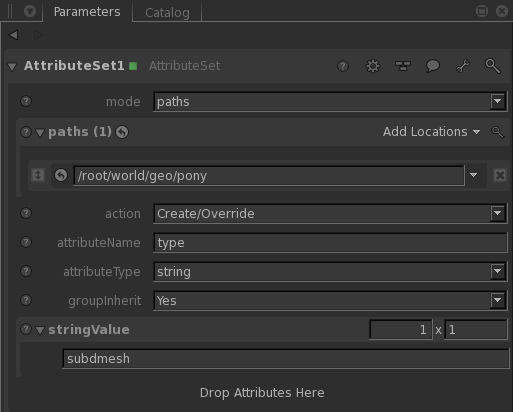Contents
In Katana, you will most likely bring in a polygonal geometry via Alembic or some other geometry format that supports them. You as an artist are not likely to have to do anything special to utilize them in Katana.
Any texture coordinates or other primitive variables that you need for look development must be added upstream in your pipeline. They will be available when you import your geometry into Katana.
The RenderMan documentation for Polygons has more info about them.
You can convert polygonal geometry to a subdivision surface by using an AttributeSet node to set the "type" to subdmesh. You may want to do this if your geometry looks faceted as you move the camera towards the geometry. If you have a low-poly model, you will see differences in the rendered surface. If your surface already has a large number of polygons, the difference will be less noticeable.
Converting your model to a subdivision surface has a some advantages, though it will cost more memory and time to render. With a subdivision surface, displacements can be made in a more robust manner, and you will be guaranteed a smooth render. See the RenderMan documentation for Subdivision Surfaces for more information.
Should your normals need smoothing to approximate a subdivision surface, you can use the attribute in the PrmanObjectStatements called Polygon > Smooth Normals > Yes
This only provides smooth shading but not a smooth shape as the underlying topology is unchanged.

